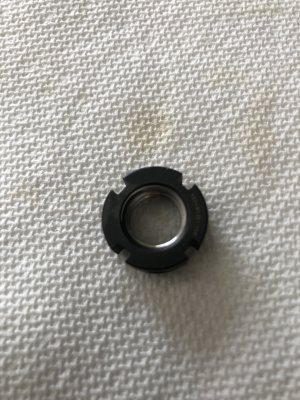I'm using the CNC kit from Precision Matthews. Installing the kit for the most part is simple.
But I've never used a precision Locknut for bearings before.
So I have a couple of questions:
1. Does the inner steel go towards the bearing? See picture labeled locknut. I would think so.
2. How much preload? How do I measure that? Gut feel? Preload, Like when you install the locknut on your cars front axle
3. Where do you find a wrench for these locknuts? Just a spanner wrench? I looked on Yinsh.com and they warned about using maybe a screwdriver with one point of contact and tightening that way would destroy it.
But I've never used a precision Locknut for bearings before.
So I have a couple of questions:
1. Does the inner steel go towards the bearing? See picture labeled locknut. I would think so.
2. How much preload? How do I measure that? Gut feel? Preload, Like when you install the locknut on your cars front axle
3. Where do you find a wrench for these locknuts? Just a spanner wrench? I looked on Yinsh.com and they warned about using maybe a screwdriver with one point of contact and tightening that way would destroy it.



